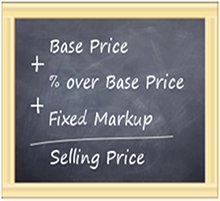Selling Product At A Loss
 My attention was called on a news article about Amazon selling Kindle Fire at a loss. The news article said that with a market price of US$199, the Kindle Fire tablet is being sold at a loss by tech firm Amazon since it takes US$201.70 to build a single unit. According to the report, the Kindle Fire media tablet carries a BOM (bill of materials) cost of US$185.60. When manufacturing services expenses are added, the cost increases to US$201.70.
My attention was called on a news article about Amazon selling Kindle Fire at a loss. The news article said that with a market price of US$199, the Kindle Fire tablet is being sold at a loss by tech firm Amazon since it takes US$201.70 to build a single unit. According to the report, the Kindle Fire media tablet carries a BOM (bill of materials) cost of US$185.60. When manufacturing services expenses are added, the cost increases to US$201.70.
The above is a case of selling a product at a loss where Amazon’s new Kindle Fire tablet device that started shipping this week is reportedly selling for almost US$3.00 less than it costs to manufacture. Research suggests that the online retailer is initially selling the tablet at a loss that it hopes to cover through sales of books and films for the device. Kindle Fire tablet users will be able to access more than 18 million films, television shows, songs, apps, games, books and magazines via the Amazon website.
In the i-café business, the inkjet printer is a product that can be compared to kindle Fire tablet. It is generally believed that printer manufacturers are pricing their entry-level models at very minimal profits and hope to make up for it in selling the ink cartridges. However, there are cases where users of some printer brands resort to cheaper substitute ink cartridges or continuous ink supply system that negate the manufacturers’ marketing plan.
Most of us understand why some business entities price their products to make very small profit or none at all. As already said, a businessman can decide to even sell a product at a loss if he knows that his buyers would still need to buy something from him to be able to use the item he sold. What is strange and beyond my understanding is when a business like i-café sell its service at a loss. Could it be a temporary strategy or the i-café owner simply doesn’t know that he is selling service at a loss?




Latest Feedbacks